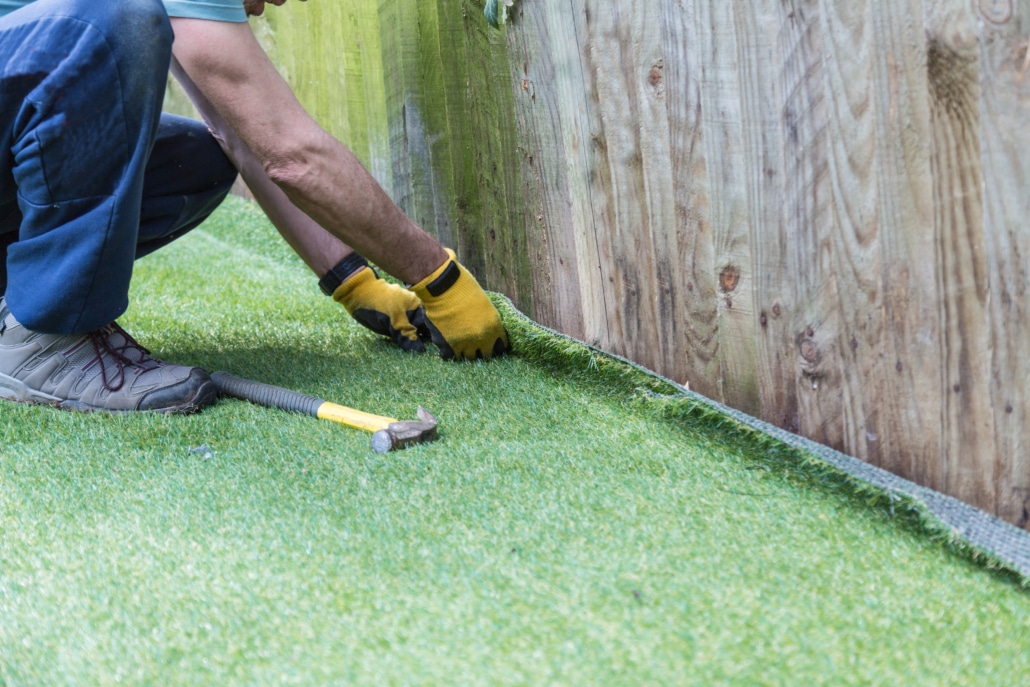Perfecting Your Lawn’s Borders: The Ultimate Guide to Artificial Grass Edging


When it comes to enhancing the look of your outdoor spaces, nothing beats a well-maintained lawn. However, natural grass can be high-maintenance and sometimes impractical, especially in areas like Las Vegas where water is scarce.
That’s where artificial grass comes into play. Not only does it provide a lush green aesthetic year-round, but it also cuts down on maintenance significantly. But did you know that to make your synthetic lawn pop and increase its lifespan, proper edging is crucial?
At Festival Turf, we understand the significance of every detail in turf installation, including edging. Edging for artificial grass is not just a finishing touch; it plays a vital role in the overall functionality and aesthetics of your lawn.
By defining clear borders, edging keeps the base for artificial turf in place, stops weeds, and ensures the ground material doesn’t spill out. In this guide, we will walk you through why artificial grass edging is essential, discuss the various types available, and provide step-by-step instructions on how to install edging for your fake turf effectively. Let’s make your artificial lawn look as natural and beautiful as possible!
Choosing to install artificial grass in your yard is a smart move for a low-maintenance, evergreen lawn. However, the role of artificial grass edging extends beyond just aesthetics. Edging is key to ensuring the longevity and stability of your artificial turf. It acts as a barrier that keeps the turf firmly in place, preventing it from peeling up at the edges. This is especially important in areas of high traffic where the edges of turf might otherwise lift and cause tripping hazards.
Additionally, edging helps to keep lawn materials – like infill – from spilling out. This containment is crucial for maintaining the turf’s ideal condition and functionality, as the infill contributes to the lawn’s drainage and resilience. Edging also deters weeds and other garden debris from encroaching into your pristine grass, saving you the hassle of frequent clean-ups and ensuring your lawn stays neat and inviting.
When it comes to choosing the right type of edging for your artificial lawn, there are several options that each offer unique benefits:
By selecting the appropriate edging, you will protect your investment and enhance the overall look of your artificial lawn. Each type of edging offers specific advantages depending on your individual needs and aesthetic preferences. With the right choice, you can ensure that your synthetic turf remains beautiful and functional for years to come.
Edging artificial turf is simpler than many might think, and we are here to guide you through the process. First, prepare the turf area by clearing out all debris, rocks, and weeds. This ensures that the base is clean and smooth, which is important for the next steps.
After clearing, take the time to smooth the surface. This involves leveling the ground so that it’s even, which helps prevent any uneven areas in your lawn that could disrupt the stability and appearance of your artificial grass.
Next, selecting the appropriate tools is crucial for a successful installation. Depending on the size of your area, you’ll need a flat shovel, hand tamper, or vibrating plate compactor. These tools help you create a firm and even base, or you might use them to compact the gravel base under the turf. Additionally, having landscape pins and a hammer ready will be essential for the final steps of the installation.
As for installing the edging material, start by aligning your chosen edging along the marked borders of your installation area. Make sure it’s positioned firmly into the ground and that it matches up evenly with the border of the turf.
Securing the artificial turf to the edging is the final step. Lay your turf carefully and use landscape pins to secure the edges of the turf into the edging material, ensuring everything is tight and flush. This not only keeps your turf in place but also stops it from lifting or shifting over time.
Investing in proper edging for your artificial turf brings numerous benefits. Aesthetically, it gives your lawn a crisp, clean look that clearly defines the borders of the installation area. This enhancement often makes your synthetic lawn indistinguishable from natural grass, adding a touch of elegance to your property.
From a functional viewpoint, edging is an effective barrier that prevents weeds from encroaching on your beautiful green space. It also ensures that the base materials under your turf remain intact, providing vital support to maintain the turf’s structure and durability.
Maintaining your artificial turf is significantly easier with proper edging. The barriers reduce the amount of time spent on upkeep since they keep the turf in place and prevent the edges from curling. You can enjoy a pristine lawn without the need to mow, water, or fertilize, spending more time enjoying your outdoor area and less on maintenance.
The presence of artificial grass edging transforms your synthetic turf into not just a viable alternative to natural grass but a preferable, hassle-free landscaping option. Edging not only secures your lawn, both physically and aesthetically, but also reinforces the functionality and ease of maintenance of your outdoor spaces.
At Festival Turf, we pride ourselves on providing top-notch artificial grass in Las Vegas that caters to your specific needs. Are you ready to upgrade your landscape with high-quality artificial grass edging? Contact our specialists, and let’s make your vision for a perfect lawn a reality. We’re here to help you every step of the way, ensuring your lawn looks great and lasts for years!

Festival Turf
Phone: 844-702-8873
Email: [email protected]
Las Vegas HQ Hours
Monday-Friday: 8:00am – 4:00pm PST
Saturday: 8:00am – 12:00pm
Sunday: CLOSED

 How to Refresh Artificial Grass?
How to Refresh Artificial Grass?